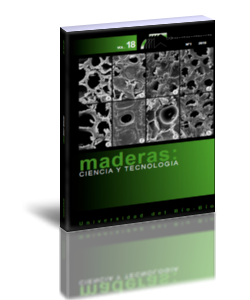Wood Chile peppers stalks-plastic composite production
Keywords:
Chile pepper stems, Pinus resinosa, tensile properties, water absorption, wood plastic composite.Abstract
Nowadays, most common wood fibers used to produce wood plastic composites are from Oak and pine trees, rice hull, recycled paper, pallets and post-industrial oak fiber, furniture waste, or cedar wood chips. This paper is focused on a new wood plastic composites based on pre-dried New Mexico red chile stems and leafs with high-density polyethylene. The specimens were manufactured following ASTM 638-9 standard using injection molding. A series of experiments were designed to investigatehow wood fiber length, geometry, and water absorption affects the microcellular structure of the new sustainable material. The effects of proportions and particle size on the strength of the resulting blend were analyzed. It was found that larger particle sizes of wood fiber showed higher mechanical properties. The blending of additives in the new sustainable material has shown to increase proper fiber dispersion improving the strength of the material.
Downloads
Downloads
How to Cite
J. Valles-Rosales, D., C. Méndez-González, L., A. Rodríguez-Picon, L., del Valle-Carrasco, A., & A. Alodan, H. (2016). Wood Chile peppers stalks-plastic composite production. Maderas. Ciencia Y Tecnología, 18(1), 179–190. Retrieved from https://revistas.ubiobio.cl/index.php/MCT/article/view/2254
Issue
Section
Article

































